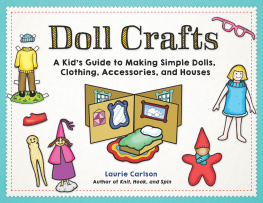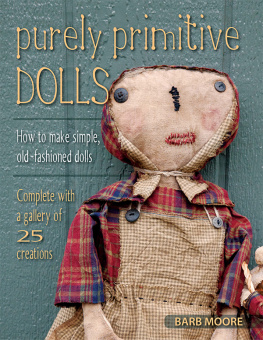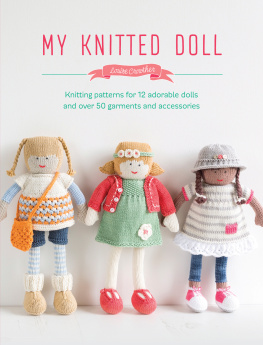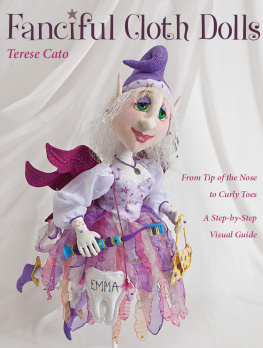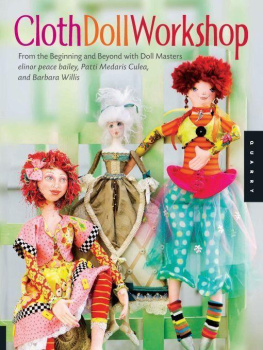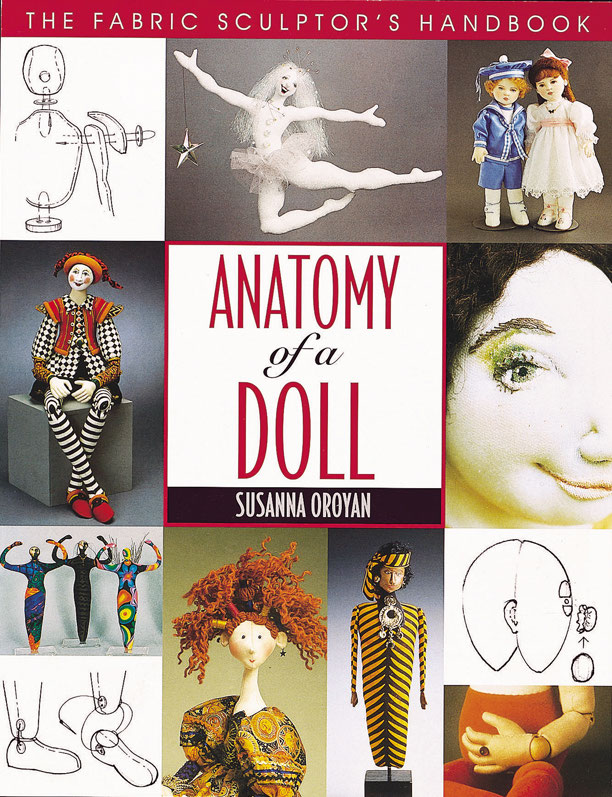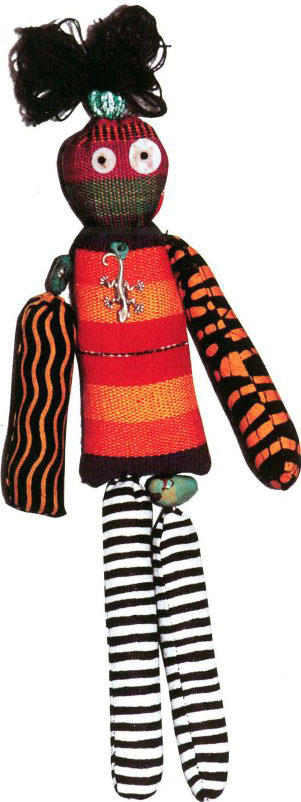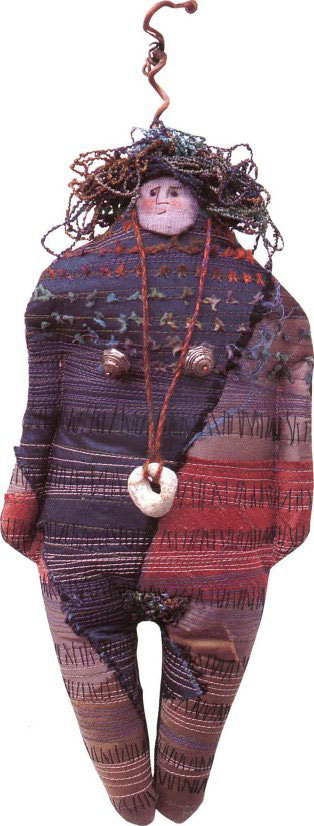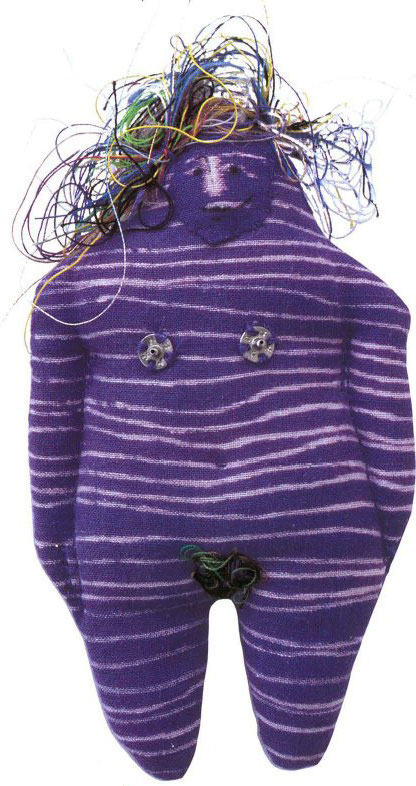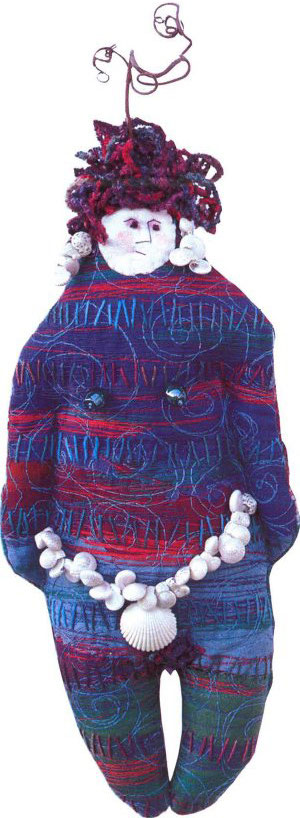Developmental Editor: Barbara Konzak Kuhn
Technical Editor: Sally Lanzarotti
Cover Design: John Cram and Kathy Lee
Book Design: Bobbi Sloan Design
Illustrator: Thomas Oroyan
Copy Editor: Judy Moritz
FRONT COVER PHOTOGRAPHS (clockwise from top):
Snow Sprite by Peggy Flynn; 15", cloth. Photo by Mark Carleton.
Ned and Ellie by Kezi Matthews; 14" and 15", soft sculpture with wool roving hairdo. Photo by Kezi Matthews.
Lady in the Forest by Jane Darin; 21", cotton knit. Photo by Joe Darin.
Joint detail of Amelia Undressed by Shelley Thornton; 24", cotton knit, stitched bead joints, body joints designed. Photo by Ron Brown.
African Princess by Sandra Feingold; 16", cloth. Photo by Bob Hirsch.
Celestial Seasonings by Julie McCullough; 32", cloth. Photo by John Nollendorfs.
Spirit Seekers by Anne Mayer Meier; 24", fabric. Photo by Photo Pro.
Jester by Akira Blount; 26", linen, cotton. Photo by David Luttrel.
TITLE PAGE PHOTOGRAPH: Dancing Jesters by Akiko Anzai; 18", fabric over paper-clay. Photo by Akiko Anzai.
BACK COVER PHOTOGRAPH: Mrs. Peepers by Lisa L. Lichtenfels; detail, nylon over wire armature. Photo by Lisa L. Lichtenfels.
DEDICATION
With Thanks
to the artists who generously shared information and photos of their work for this book...
to contributors elinor peace bailey, Barbara Johnston, and Cheiko Ogawa, who helped in the search for artists...
to exhibit coordinators Miriam Gourley, Beverly Dodge Radefeld, and Kathleen Bricker, who made photographic materials available...
to photographers Don Smith, Les Bricker, and Bob Hirsch, who so excellently presented so much of the dollmakers work...
to special friends of doll art Nancy Lazenby, Katrina Turner, Maralyn Christofferson, and the National Institute of American Doll Artists who graciously loaned photographic materials
and with love and very special thanks
to my husband Tom Oroyan who, once again, has helped make my dreams come true.
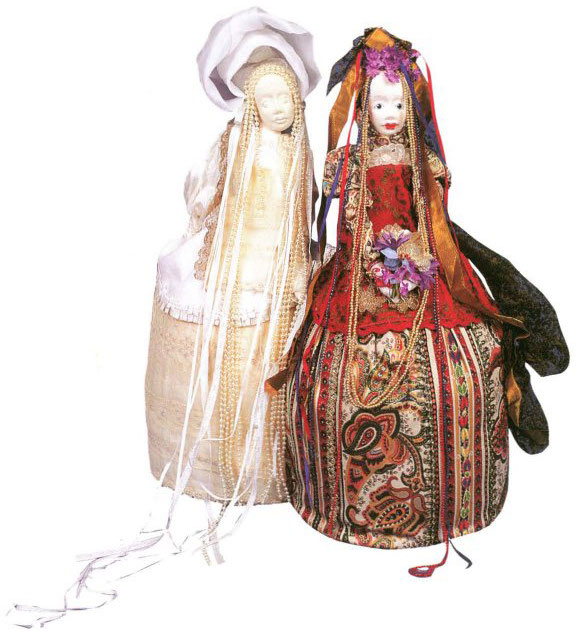
The Bride and Her Ghost by Susanna Oroyan; 18", stuffed cotton, cotton over sculpted clay face. Photo by Don Smith.
Scrap dolls (two versions) by Virginia Robertson; 8" to 10", cloth. Photo by Virginia Robertson.

Sewing Basket Doll (front and back) by Margi Hennen; 8" to 10", cloth. Photo by Warren Dodgson.
Of Winter Fields Lately (two versions) by Margi Hennen; 8" to 10". Photo by Warren Dodgson.
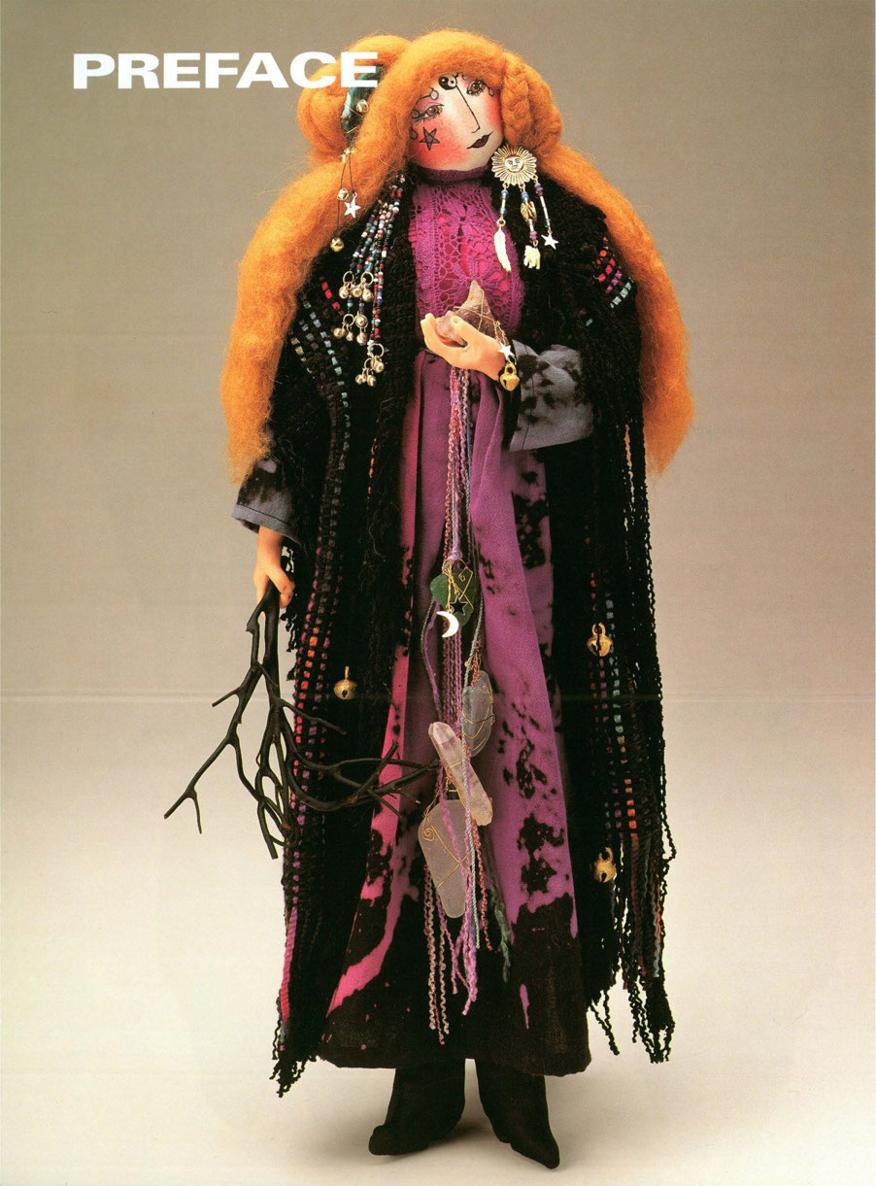
Alya, the Childs Creative Spirit by Gretchen Lima; 21", fabric, hard sculpted hands. Photo by Bill Lemke.
As a teacher and writer in the field of dollmaking, I am often asked questions such as, I have a head and hands, where can I find out how to put them together? or I want to make a doll with a bust, where can I learn how this is done? In most cases the questioners do not want to be referred to a specific pattern or project book because they do not want to take the time to work through anothers design. They just want to know the particular technique or set of techniques that they can incorporate into their own projects. The problem for me in answering them is that there are usually several possible approaches. I find myself saying, You could do this, or this, or if you did that, you could do this, which is a little too much for the questioner to take in all at once. Often the conversation ends with both of us saying, I wish we had a standard reference book that could cover all the bases.
This book is an attempt to outline as many methods of doll construction as possible, so that beginning or working dollmakers have a handy answer book. The book might best be described as a technical reference book with expansion capabilities: a workbook to help dollmakers develop ideas. When you think, I want to make a pressed felt head, how can I do this?, you should be able to find a few basic approaches within the sections. Then, I hope, you will invent, create, expand, or change the idea using your imagination.
Dollmaking is a multi-media construction. It really doesnt make any difference which type of dollmaker you are, or want to be. Nor does it make any difference which particular technique you choose. The main considerations when making a doll are to understand the desired effect or impression you want to make, then to be willing to play with variations of your idea and explore any directions that are suggested. And to take into consideration the effects of a technique when you use or manipulate a certain material. This book explains how to achieve certain effects and helps to answer the what happens if... questions.
I hope you will find the material useful for practice, for play, or for reference when solving a problem. Use the book as a practice manual or exercise book. If youre a beginner, work through the exercises that relate to the outlined techniques in order to teach yourself a good, general course in dollmaking. If you have some experience with dollmaking, try the techniques that are unfamiliar to youat the very least, the result would be learning those which you did not like, or those that you found uncomfortable. At best, you will have given yourself an enlarged repertoire of possibilities to draw from when solving design problems.
As you work through the sections, youll find that many, many artists shared photographs of their work in order to expose a reader to the equivalent of four or five gallery exhibits. In most cases the photographs accompanying the sections show examples of that method, but, do note, they are often variations on the theme. Artists being artists, they do their own thing. Accordingly, use the photo examples as a guide for your own inventions by studying where the stitches are placed and how the parts are shaped. Also study the number of possible variations that can happen using just one method, and think about how many techniques you can identify on just one piece. Looking, studying, and experimenting are the ways that most of us learned to do what we do...and so can you.
Unless otherwise noted, the drawings and diagrams are either generic forms (not an integral part of a copyrighted or patented pattern), or they are parts of original patterns or models that I have developed. In most cases the pattern shapes will not be directly usable to create specific finished doll forms. Either reproduce or copy the shapes to use as an aid or as a basis for variation when developing your own designs.


